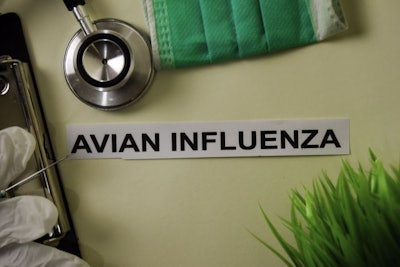
Following a five-month hiatus, highly pathogenic avian influenza has been detected again in the Republic of Iraq.
In mid-May, more than 24,000 poultry died at a farm in Wasit, according to the notification to the World Organisation for Animal Health (WOAH; previously OIE). The presence of the H5N8 HPAI virus serotype was confirmed, but the source of the infection is unknown.
During the first week of June, a second outbreak was officially confirmed — this time in a flock of 31,000 birds in the Baghdad governorate. There, 14,200 of the birds died.
From the WOAH reports, both affected premises appear to be close to the national capital city, Baghdad. Fate of the remaining birds at each location is not clarified.
China closes previous HPAI outbreak series
Last week, China’s veterinary authority declared to WOAH that 14 earlier HPAI outbreak series in poultry have been closed. Of these eight began and ended in 2018, four spanned 2018 and 2019, and two occurred within the first four months of 2020.
In eight of these series, the H5N6 virus variant was detected. Meanwhile, the remaining outbreaks were equally split between the H5N1 and H7N9 HPAI virus serotypes.
In terms of provinces, 13 were represented. Only in Hunan was more than one virus family found — the H5N1 and H5N6 variants. Infections were widely spread across the country from Xinjiang in the northwest and Liaoning in the north-east to the southern provinces of Yunnan and Guangxi.
With the 14 HPAI series reported covering a total of 17 individual outbreaks, most series had just one outbreak. In almost all of these, the affected premises were described as farms. Each affected flock comprised between 1,000 and 86,000 poultry. Total number of poultry directly impacted by these outbreaks was almost 339,000.
Two Asian nations ease restrictions on Japanese exports
With no new HPAI cases confirmed in the country's poultry and cleaning and disinfection completed, Japan's agriculture ministry reports that restrictions have been lifted at the most recently infected premises.
As a result, Singapore and Hong Kong have lifted bans on imports of Japanese poultry products from all except three of the 12 prefectures where HPAI cases occurred in poultry since the start of last winter. Over that period, outbreaks were detected in 25 poultry flocks, most recently in the Abashiri city region of Hokkaido prefecture in mid-May.
HPAI situation in Asian wild birds
Over the past three weeks, Japan’s veterinary authority has registered a further 54 cases of HPAI among the country’s wild birds populations.
Latest to be reported to WOAH were 49 birds that tested positive for the H5N1 virus serotype. Most of these were crows, and all were found on the island of Hokkaido or the northern Honshu prefecture of Akita. The other five birds were all eagles, which were infected with an HPAI virus of the H5 family. They were found in four different districts of Hokkaido in the period April 9-26.
In Taiwan, the H5N2 HPAI virus serotype was detected again during February. An earlier outbreak series in the territory had ended only in November of last year. Of eight birds at a wildlife center — seven eagles and one hawk — six died earlier this year. To WOAH the veterinary authority has declared this outbreak series “resolved.”
As for poultry, China’s veterinary authority has also officially declared a number of earlier HPAI outbreak series in wild birds closed. These 10 series covered nine provinces/regions, including Beijing. The first cases were identified in March of 2019, and the most recent ones in November of 2021.
In eight of these series in China, HPAI infections were linked to the H5N8 virus serotype, while H5N6 was detected in two regions, and the H5N1 and H7N9 variants each in one area. Only in the northeastern province of Liaoning were two different virus serotypes detected in wild birds — H5N6, and H7N9 at a zoo.
China reports two new human influenza cases
In its latest update on the influenza situation in the Western Pacific region, the World Health Organization (WHO) outlines two new human patients with lab-confirmed infection with influenza of avian origin.
At the end of April, a 49-year-old man from Baise city in Guangxi province died. As well as co-morbidities, he was infected with the avian influenza A(H5N6) virus. While the man himself had been exposed to poultry meat, none of his close contacts has been infected. This infection brings to 78 the number of confirmed infections with this virus in the region since 2014, according to the WHO.
In April, the world’s first lab-confirmed infection with the avian influenza A(H3N8) virus was reported in China. The condition of the young male patient from Henan province was described as “critical.”
Recently, WHO was notified of a second case linked to this same virus family. In Changsha city in Hunan province, a five-year-old boy was reported with mild symptoms in early May. The patient has since recovered without requiring hospital admission, and there have been no infections among his close contacts.
View our continuing coverage of the global avian influenza situation.

















